Hi! I’m Mark. I’m Fulcrum’s UX designer. Today I’d like to tell you about Fulcrum’s UX research process. You will learn why we do it. What every participant of the process gets from it. What UX services there are. What Fulcrum UX research looks like. You’ll learn what information sources we use to get our UX answers. And you’ll see a real-life example of a UX research plan we executed for a client.
Reasons for Conducting UX Research for Every Project
Ideally, we conduct a UX research prior to building the actual product on every new project we take on. Ultimately, the research makes all the difference between making a good product and a mediocre one. Between making a product that solves a real problem and creating something based solely on assumptions and guesswork.
User research implies we engage and observe real users. We get to know their behaviour, their needs, and pains.
Of course, the reasons for conducting UX research might differ for every project. And for every software development company as well. These are the reasons we have defined for ourselves at Fulcrum:
Our projects, and as a result our team as well, get bigger.
The bigger our team gets the more we need clear and well structured data. So everyone understands what we are working on and what we are trying to achieve. UX research is one of the things that provide us with that data.
The more developers we hire, the higher the cost of a mistake becomes. Yes, developers in Ukraine are a lot cheaper than in the US. But they still are quite a big part of the budget. Creating a product the users don’t need and getting burned as a result becomes more troublesome the more developers work on it.
We tend to get more and more complex projects. These projects demand better control.
Big budget for a project = big cost of a mistake = big system = a lot of people to be affected. We need feedback as close to reality as possible to be able to understand the client’s business needs and goals. Validating an idea via mockup and user tests is much cheaper and easier than developing a full fledged app.
And the research is a great onboarding for new people joining a growing project.
Conclusiveness, facts, science.
We just love science. Isn’t it better to create a product that users will definitely need and appreciate than just steal whatever the competitors are doing? Simply stealing from competitors usually results in a mediocre product with no empathy. And in modern world empathy, culture, being in tune with the end-users is so very important.
User interviews are not enough for proper research. We need to see the full picture. Only full-fledged UX research can give us that. Besides, the research is not fundamentally difficult. Every person ever involved in our research perceived it as easy and intelligible.
We just want to get better at what we do.
The research first and foremost is not about the design. It is about finding the best approach. About fully understanding the idea. And about creating the best interaction between humans and interface.
The more projects and users we have, the more opportunities we get for research and collecting data. This data provides us with the way to design based on facts and evidence. As a result we get better at what we do. And we strive to be the best in the business.
Fulcrum UX Services
There are three UX services we provide:
- UX audit
- Usability test
- UX research
User experience audit is an evaluation of a product’s UX performed by an expert. The expert’s assessment is based on:
- subjective experience;
- analytics data;
- usability heuristics;
- generally accepted rules of layout building;
- guides;
- trends;
- design laws etc.
Usability test is done by an end-user and observed by an expert. The user performs a task and the observer writes down the results. The expert can ask relevant questions too. After the test we evaluate the usability as 0-100 SUM.

User experience research is an exhaustive approach to understanding the current reality of the users. To fully understand their real needs, pains, and wants. We’ll look into this one a bit closer next.
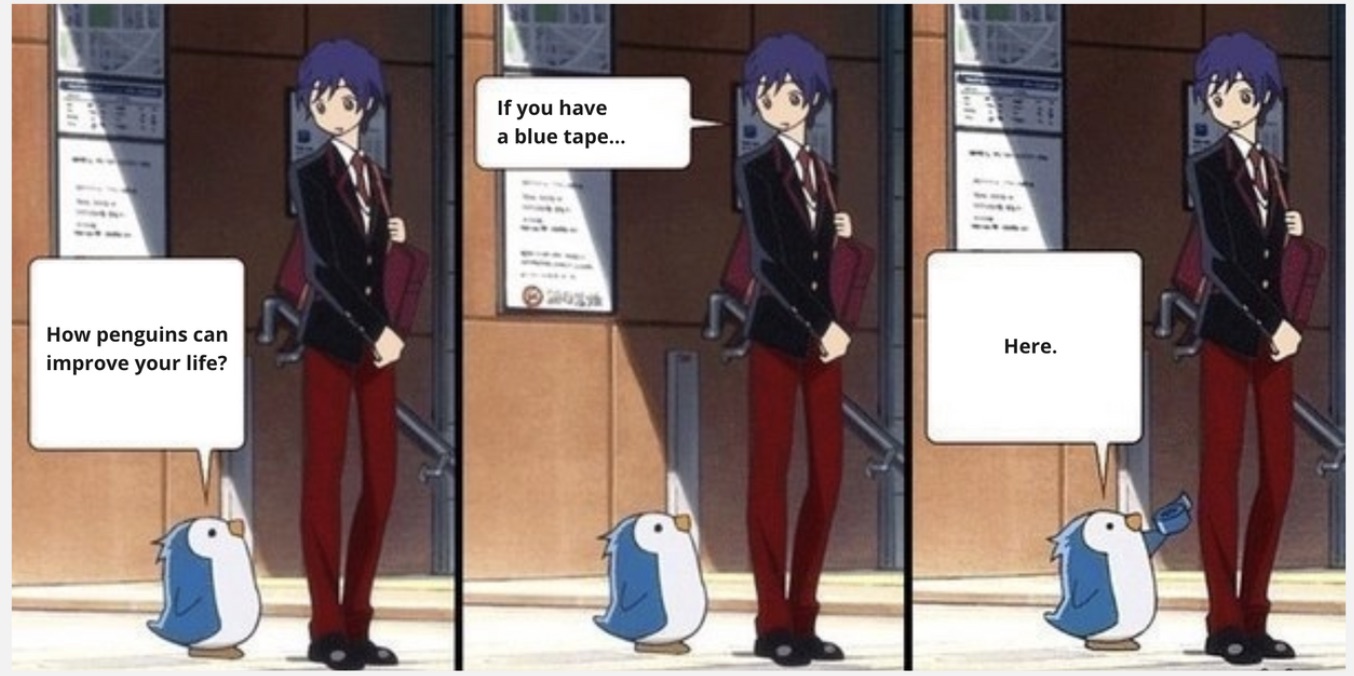
Fulcrum UX Research
We’ve formulated the following rules for the UX research findings and the resulting design decisions. They are:
- required for the discovery stage;
- evidence-based;
- testable;
- documented;
- understandable for the client’s team;
- improve user experience;
- provide certainty in the design decisions.
There are two types of UX research that help us get the findings described above.
UX Research Types:
- Quantitative “502 of 750 or 66.6% of users could not renew their password”
- Qualitative “users can’t renew passwords because the required telephone number field doesn’t have the county code”
To gather the data we use one or a combination of the following methods.
Quantitative:
- Survey
- Hotjar analysis
- Unmoderated usability tests
Qualitative:
- Usability tests
- Online usability tests
- Hotjar analysis
- Deep interviews
- Deep interviews online
- Context interview
- Shadowing
- Cards sorting
- Navigation test
- 5 seconds test
- Survey
- Focus groups
- Workshop
After we have the data gathered we need to interpret the quantitative findings. Turn them into qualitative and easier to understand.
So we analyze the numbers we received from analytics and turn them into clear insights. “Only 36% of users scroll all the way to the buy button. It is placed too low on the page”. The analytics numbers also provide a good understanding of the success of our actions. “After the redesign the website conversions grew by 500%”. Finally, the surveys and analytics numbers give us a way to formulate our first hypothesis. “Only 30% of users open the registration confirmation email. Can there be an issue with our email agent or the registration feedback?”
Whether we use quantitative or qualitative methods largely depends on the research goals and the product itself. Though most times we use a combination of the two research types and research methods associated with them.
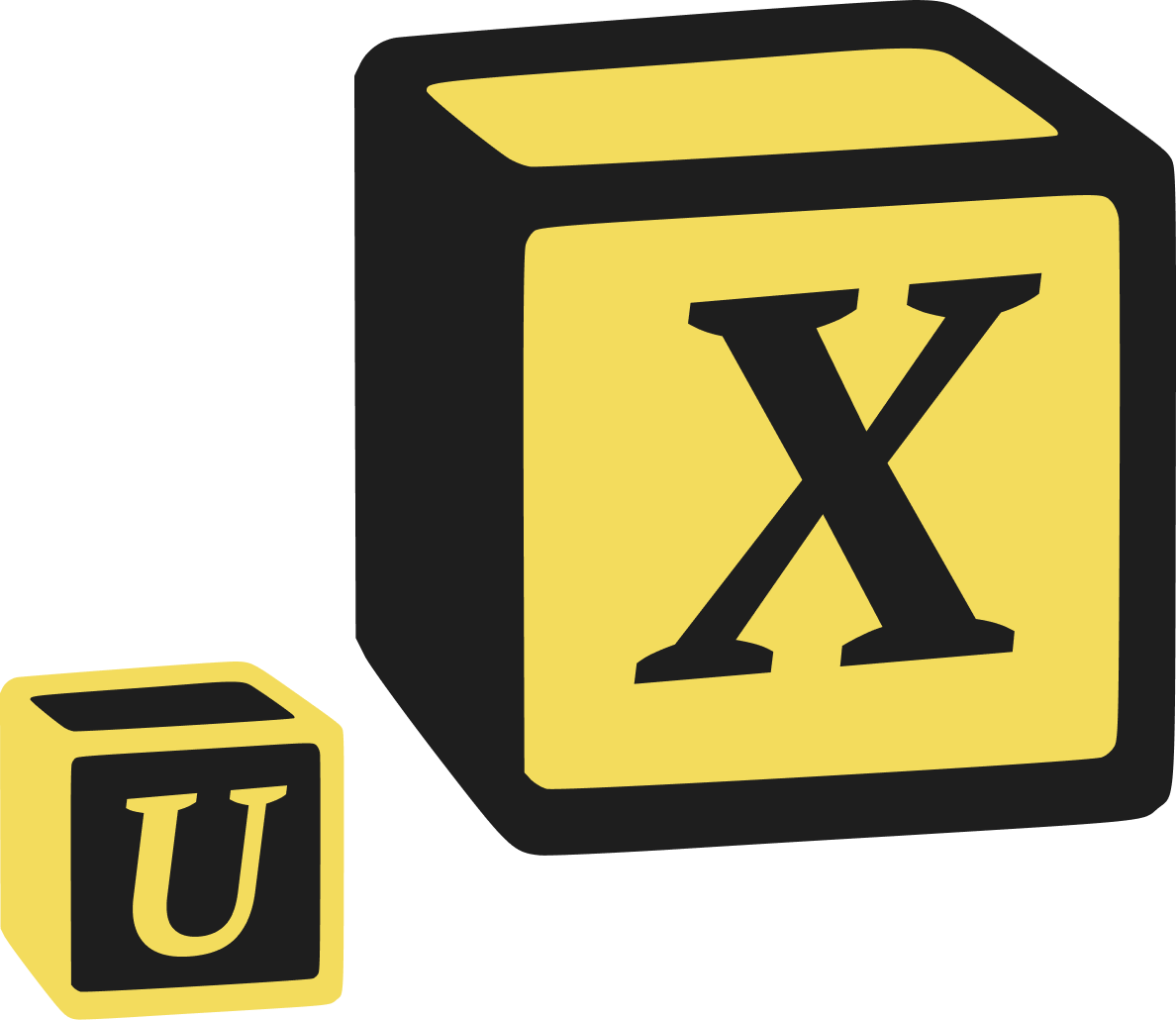
An Example of the UX Research Plan for One of Fulcrum’s Projects
Goal: provide users with a way to invest in real estate and use the investment – live in properties all over the world.
Strategy to achieve the goal in 4 steps:
- How Might We — one global goal on behalf of end-users.
- Design Tasks — design tasks to help achieve the goal.
- Research Questions — questions to ask in order to understand the current situation and users’ problems.
- Methods & Objects — methods and information sources to answer the research questions.
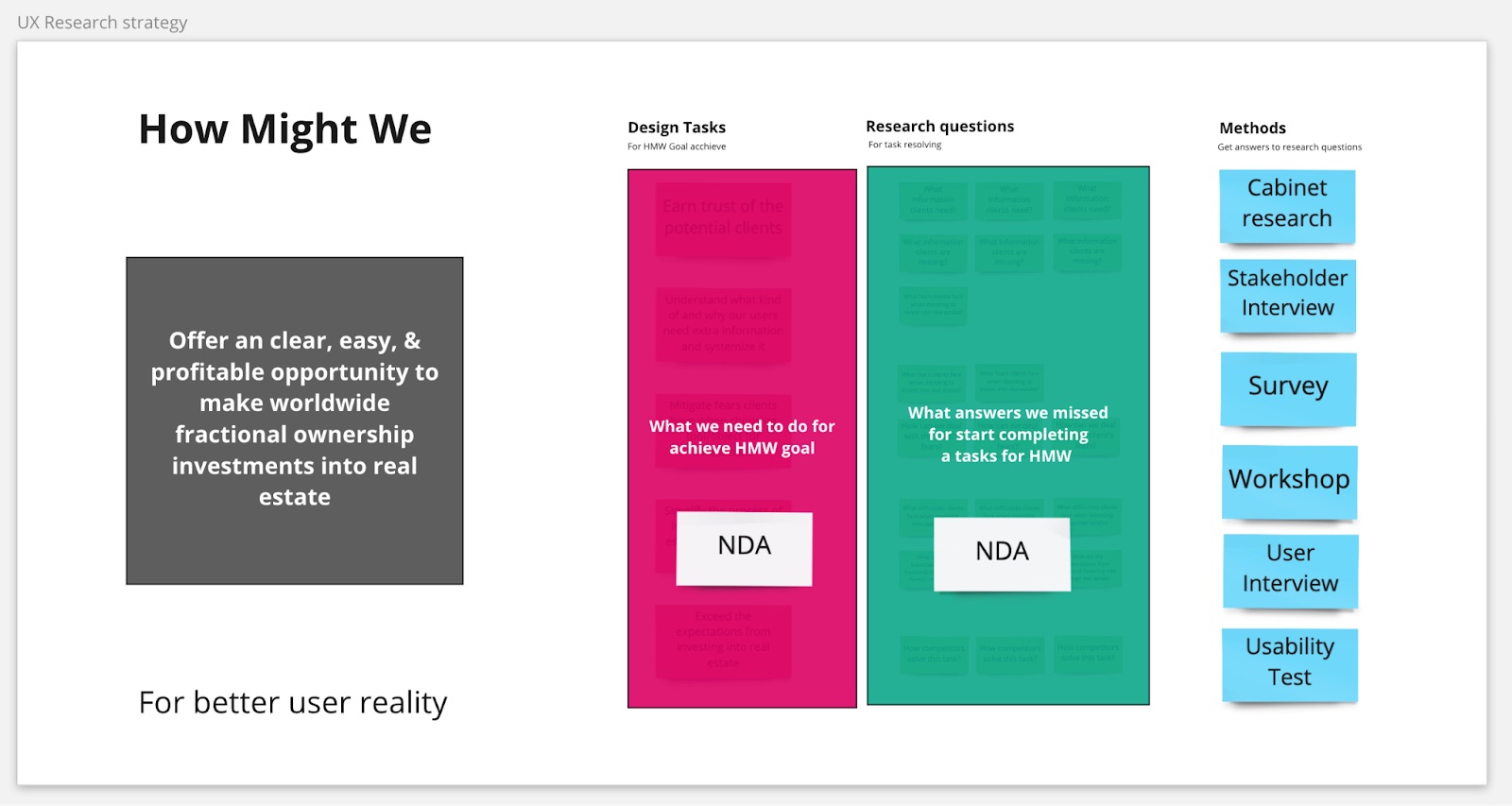
By replying to the “How might we…” question we finish the minimum UX research iteration.
Here’s an example of the detailed UX research plan for one of Fulcrum’s projects:
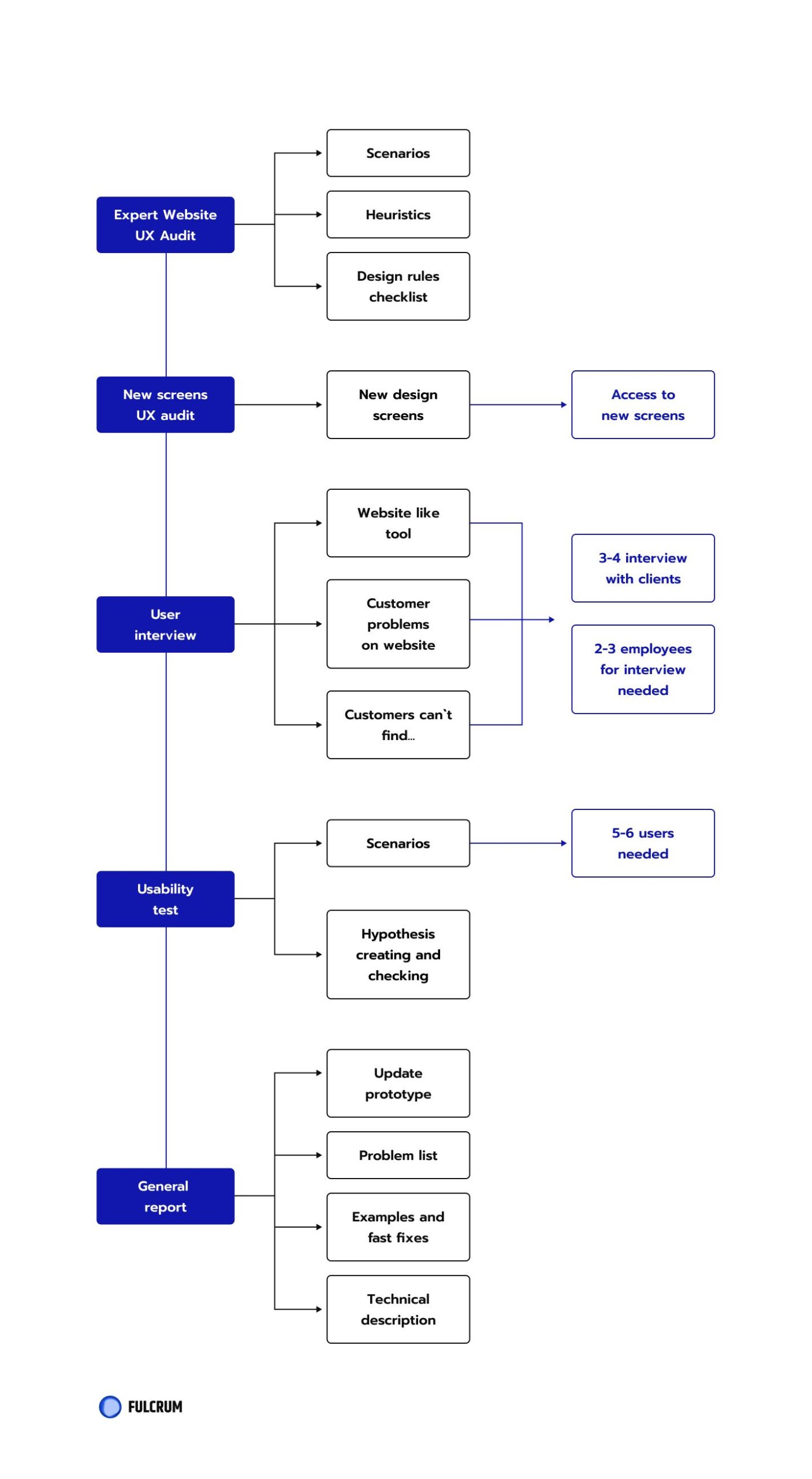
Information Sources to Answer the Research Questions
The current users are obvious, yet not the only source of information to help answer the UX research questions. Below are the usual sources we look into when conducting a UX research for our clients.
Users
- Current. Currently use the product
- Potential. Might be interested in the product
- Opted out. Tried the product and turned it down
- Never tried. Users that never used the product and don’t want to try
Experts in the niche
- Related to the client’s product
- Competitors
Client
- Business
- Technology
- Marketing
- Support
- User researchers
Documents
- From the users
- About the users
UX research encompases a lot of methods and information sources. As we see it, it’s main goal is to combine the POVs of business, users, support, and experts to create a better product.
Final Words:
As you can see UX research is very useful. You might think you know your customers and how they use your website. But the truth can surprise you. UX research provides an opportunity to satisfy the users and help them where they truly need help. Without the guesswork you can focus on the things that actually matter and stop spending your resources on the things that don’t.
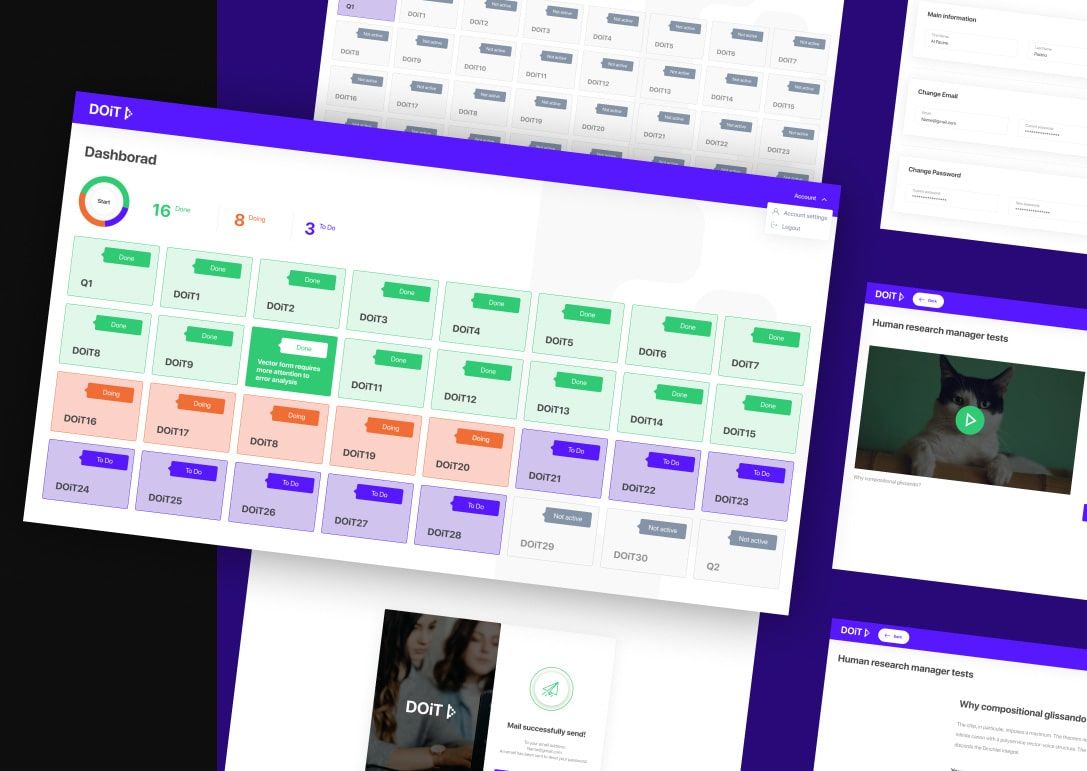
FAQ: UX research
-
What is UX research?UX research is an assortment of investigative methods combined together. The goal of this research is to provide insight and context to the design from the perspective of the end user.
-
Why UX research is important?UX research helps back the design strategy with proved data. This in turn helps the designers create better products for end users.
-
How to get into UX research?Just give us a call!
test


